|
Weekly Watch is a bulletin for emergency managers, partners and stakeholders. If you have topics pertaining to emergency management you'd like included in a future issue, please email OEM Public Affairs. Content must be received by noon on Friday to be considered for the following Monday's report. If you'd like to unsubscribe, you'll find directions at the bottom of this issue. |
|
Director's Message
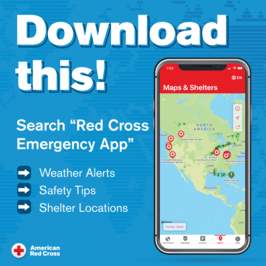
In recognition of National Preparedness Month, this week's Director's Message comes from Rebecca Marshall, Regional Disaster Officer with the Red Cross Cascades Region.
At the Red Cross, we spent all year preparing for events like the recent wildfires, including the Rum Creek and Cedar Creek Fires. We undergo training, simulations, drills and confidence builders to get ready to help the people evacuated from disasters like wildfires. We recognize people walk into our shelters worried and uncertain about their futures. We are there for people on the worst days of their lives. Our task is to create a safe and secure place for them to be.
Each day, we provide a cot, food, mental health services, medical services, and with the help of our partners, daily information and updates so they know what to expect. As always, Mother Nature can be unpredictable, so flexibility is always a priority. These fires remind all of us that wildfires can explode in size in only a few hours and the need for support can grow rapidly.
Right now, we have staff in place at various shelters in the state to help those who have been asked to leave their homes immediately. We’ll keep those staff in place as long as the counties need us. We are in constant contact with county emergency managers and other partners to best support evacuees.
For our volunteers, it is the realization that this is what they’ve trained for. It’s a chance for them to put their skills to use and to solidify our mission to prevent and alleviate human suffering.
We are forever in awe of the incredible work our firefighters do to protect our communities, at times with deadly results. Our hearts go out to the families of Logan Taylor, who lost his life fighting the Rum Creek Fire, and Collin Hagan, who died while fighting the Big Swamp Fire. We also want to extend our thanks and appreciation to those crews who are fighting the heat and smoke in several Oregon counties as we speak to protect the lives, homes and daily life in our great state.
Respectfully,
Rebecca Marshall
Regional Disaster Officer, Red Cross Cascades Region
|
An intersectional approach to disability rights
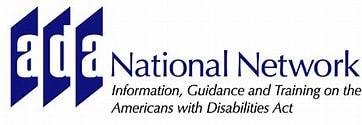
The ADA National Network is presenting a virtual webinar titled, What’s Race Got to do With It: An Intersectional Approach to Disability Rights, from 10-11:30 a.m. on Sept. 13. This session will introduce the concept of intersectionality, with particular emphasis on the ways in which ableism and racism are interconnected. The webinar will discuss how intersections of race and disability shape experiences and perceptions of disability, and how ADA Centers and other disability service organizations can outreach to, support and collaborate with underserved communities. Participants will be able to describe how racism and ableism are interconnected; give an example of how people who do not have disabilities can experience ableism; and identify at least two actions that may enhance outreach, service to, or collaboration with stakeholders from underserved communities. Learn more and register at the ADA National Network website.
|
Making mitigation work webinar

The Natural Hazards Center is excited to announce the return of its popular webinar series, Making Mitigation Work. Produced in partnership with FEMA, the series features free one-hour webinars that highlight progress in mitigation policy, practice and research. Join the series from 10-11 a.m. on Sept. 13 with Creating a "Codealition": Bold Plans for Using Building Codes to Strengthen Resilience. This session will feature government leaders who shaped the National Initiative to Advance Building Codes initiative as they discuss its priorities and community engagement. Learn more and register via Zoom.
|
Engaging communities in preparedness

FEMA is hosting a virtual webinar for National Preparedness Month from 2-3 p.m. on Sept. 14. Join community preparedness leaders from Corvallis and Joyce, Wash., to hear what they've done to help plan and prepare their neighborhoods for emergencies and disasters. From low- to no-cost steps like getting to know their neighbors, to more extensive measures such as developing a water filtration and water storage system to last weeks, these panelists will discuss what's been working in their communities. They'll share common themes of community engagement and action, with the hopes of inspiring other individuals and groups to take steps to get better prepared. Register via Zoom.
|
National Hispanic Heritage Month
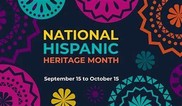
National Hispanic Heritage Month is Sept. 15 to Oct. 15, a time to celebrate the histories, cultures and contributions of U.S. Hispanic and Latino/a/x and Indigenous communities. Latino/a/x and Indigenous are the largest minority group in Oregon, accounting for nearly 14% of the state’s population. The 2022 Hispanic Heritage Month Breakfast, Oregon’s official kick-off celebration for Hispanic Heritage Month, will take place from 8-11 a.m. on Sept. 16 at the Salem Convention Center. Representatives from the private sector, public institutions, non-profits and public elected officials and candidates will join us to celebrate the contributions Hispanics have made to Oregon and the U.S. There is a cost associated. Learn more and register via Constant Contact.
|
Building a foundation of preparedness in Seattle's Black and African American community
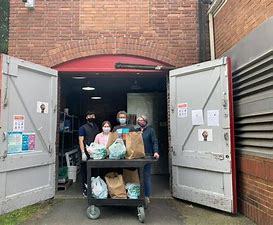
At a virtual webinar from 10-11 a.m. on Sept. 21, Andrea Caupain, CEO of Byrd Barr Place in Seattle, will discuss how the organization helps people move from poverty to self-sufficiency, while helping build the political strength and economic wealth of the Black community across Washington state. Following the presentation, Dr. Cassandra Jean, a public sociologist interested in the response and recovery of marginalized communities following disasters, will share some of her research. A discussion with both speakers will follow. Register via Zoom.
|
Emergency Management ShakeAlert Symposium

The Social Science Working Group for the ShakeAlert system is holding a Zoom session on ShakeAlert and earthquake early warning-related research relevant to emergency managers from 9-11 a.m. on Sept. 28. The session will cover a variety of topics, from Wireless Emergency Alerts, to media coverage about ShakeAlert rollouts, to adding questions about ShakeAlert to baseline surveys about people's understanding of this new warning system. Learn more and register at Google Docs.
|
Grant opportunity to support 988 Lifeline services in tribal communities

September is Suicide Prevention Month, and the U.S. Department of Health and Human Services (HHS), through the Substance Abuse and Mental Health Services Administration (SAMHSA), has announced a new $35 million grant opportunity to better support 988 Lifeline (formerly the National Suicide Prevention Hotline) services in tribal communities, which face unique challenges to accessing technology and crisis services. The grant funding, which will provide resources to improve response to 988 contacts (including calls, chats and texts) originating in tribal communities, will result in more trained crisis counselors being able to connect with even more people in need. Learn more and apply by Oct. 25. If you or someone you know is struggling or in crisis, help is available. Call or text 988 or chat 988lifeline.org.
|
Preparing Oregon’s Communities of Color for disasters

United Way of the Columbia-Willamette engaged 120 Oregonians to identify current gaps and urgent needs for preparedness messaging, materials and resources for communities of color. The organization has issued a report, Preparing Oregon’s Communities of Color for Disasters, to help readers understand what what is being done to support these communities, what is missing, and how to ensure everyone is prepared for the next disaster. The report combines 10 months of data collection, analysis and sense-making, primarily using qualitative research methods to understand Oregon’s inclusive messaging landscape. Read and download the full report in English or a report summary in English and in Spanish at the United Way website.
|
ICRP offers access to publication on large nuclear accidents
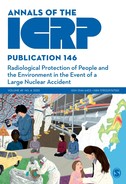
Given the significant concern about military action around Ukraine's Zaporizhzhya nuclear power plant (NPP) and the possibility of similar activity around other NPPs in Ukraine, the International Commission on Radiological Protection (ICRP) has made ICRP Publication 146 Radiological Protection of People and the Environment in the Event of a Large Nuclear Accident available. Although this publication was not specifically intended to cover radioactive releases due to military action, the principles and guidance provided should be helpful should an event occur. Read the document at ICRP’s website.
|
FEMA announces $40M grant to advance the nation’s public alert and warning system

FEMA has released the funding notice for the Next Generation Warning System Grant Program. This new program makes $40 million in fiscal year 2022 available to the Corporation of Public Broadcasting to allow public broadcasting entities to acquire and implement new technologies that advance the nation’s public alert and warning system by enabling enhanced use of broadcast transmissions to disseminate alerts over FEMA’s Integrated Public Alert and Warning System. This grant program will help public broadcasters, especially those in areas with few broadcast providers, upgrade to the latest broadcast technology standards that enable advanced dissemination of emergency alert messages. Review the full funding notice at Grants.gov.
|
Checklist for Communications Technology in Training and Exercises from NCSWIC
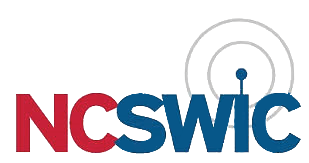
The National Council of Statewide Interoperability Coordinators’ (NCSWIC’s) Planning, Training, and Exercise (PTE) Committee has developed a Checklist for Communications Technology in Training and Exercises. The checklist provides planning and evaluation considerations for Statewide Interoperability Coordinators (SWICs) and other emergency preparedness personnel when incorporating new communications technology into a training or exercise. The checklist includes considerations for how to build the new technologies into an exercise based on the exercise parameters; what evaluation criteria could be used to assess the technologies; the kinds of partners and stakeholders who should be consulted or involved; and other tips to make the use and evaluation of the technology successful. Access the checklist on CISA’s SAFECOM website.
|
|
|
Emergency Management Job Postings |
|
|
Do you have an emergency management-related job posting you’d like included in Weekly Watch? Submit listings by Friday noon to be considered for the following Monday's report; send to OEM Public Affairs at OEM_PublicInfo@oem.oregon.gov.
PeaceHealth Communications Specialist. Learn more and apply at Indeed -- position will remain open until filled.
Regional Disaster Preparedness Organization Managing Director (Manager I). Learn more and apply at Government Jobs -- position will remain open until filled.
|
|
Training Opportunities and Resources |
|
Total Federal Share of Public Assistance
Disaster Funds Obligated to be Spent in Oregon
DR4499—COVID-19: $588,055,505
DR4519—2020 Flooding: $4,045,407
DR4562—2020 Wildfire: $380,980,325
DR4599—2021 Ice Storm: $14,875,206
|
|
|
|
|